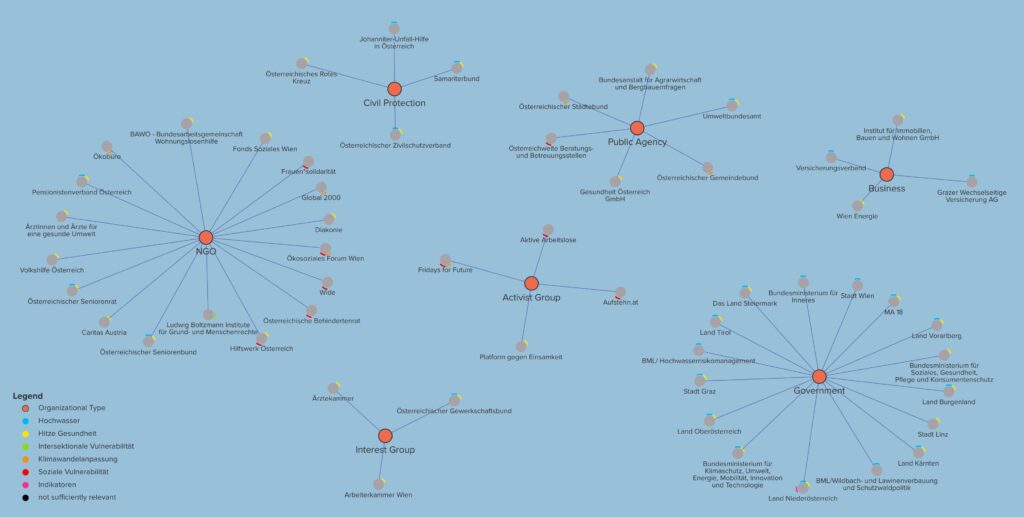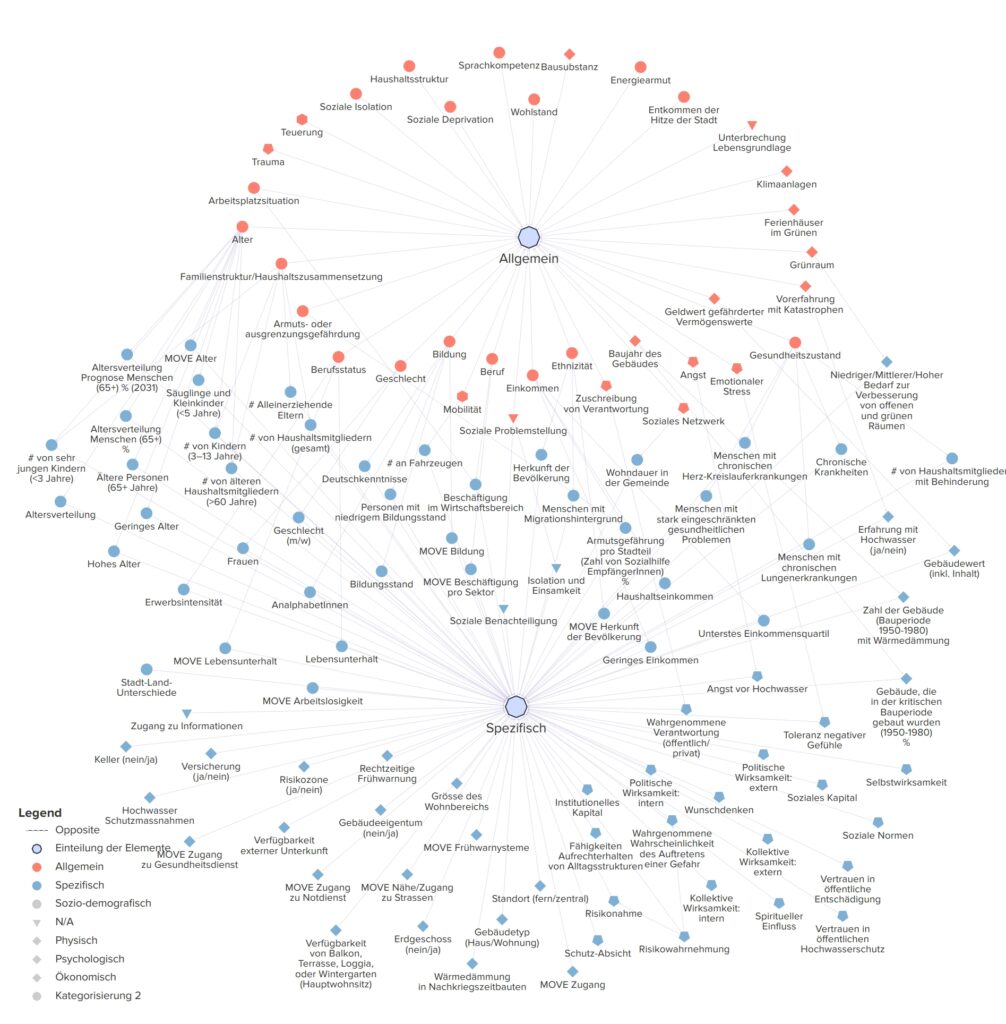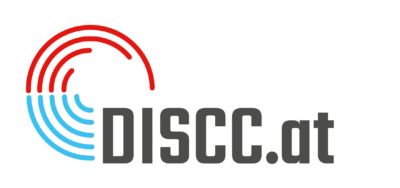Approach
The project is based on close cooperation between science and practice, as the project’s goals can only be achieved together. Therefore, the first step was to identify important institutions with which the DISCC-AT project would like to cooperate. The following map has emerged from this process (click for larger version):

In March 2023, a joint workshop was held with stakeholder. Click here for details.
The March workshop identified key factors/attributes that, alone or in combination, increase vulnerability to climate risks; e.g., age, gender, income, housing, social network, language/migration background, pre-existing conditions. These align quite well with the attributes identified in the literature review. The workshop also identified households as an appropriate socio-economic unit for further vulnerability analysis. The following figure clusters our findings (click for larger version):

Subsequently, we are now jointly defining archetypes of vulnerable households based on common combinations of attributes.
Next steps
Using the new vulnerability information for household archetypes in ongoing or planned activities (“mainstreaming”) requires an iterative alignment with practice requirements. Examples of relevant activities include:
- Improved precautionary measures
- Stronger consideration of specific vulnerability in training and manuals
- “Quick check” for the assessment of heat vulnerability of living space
- Making allocation guidelines and subsidies more climate-friendly and accurate
- Evaluation of measures for adaptation to climate risks, e.g. within the framework of the Climate Action Plan of the City of Graz
- Contributions to heat folder for target groups
- Contributions to the vulnerability platform
- Overview on major levers and levers
If you are interested in any of these (or other) activities, please send us a short message.
